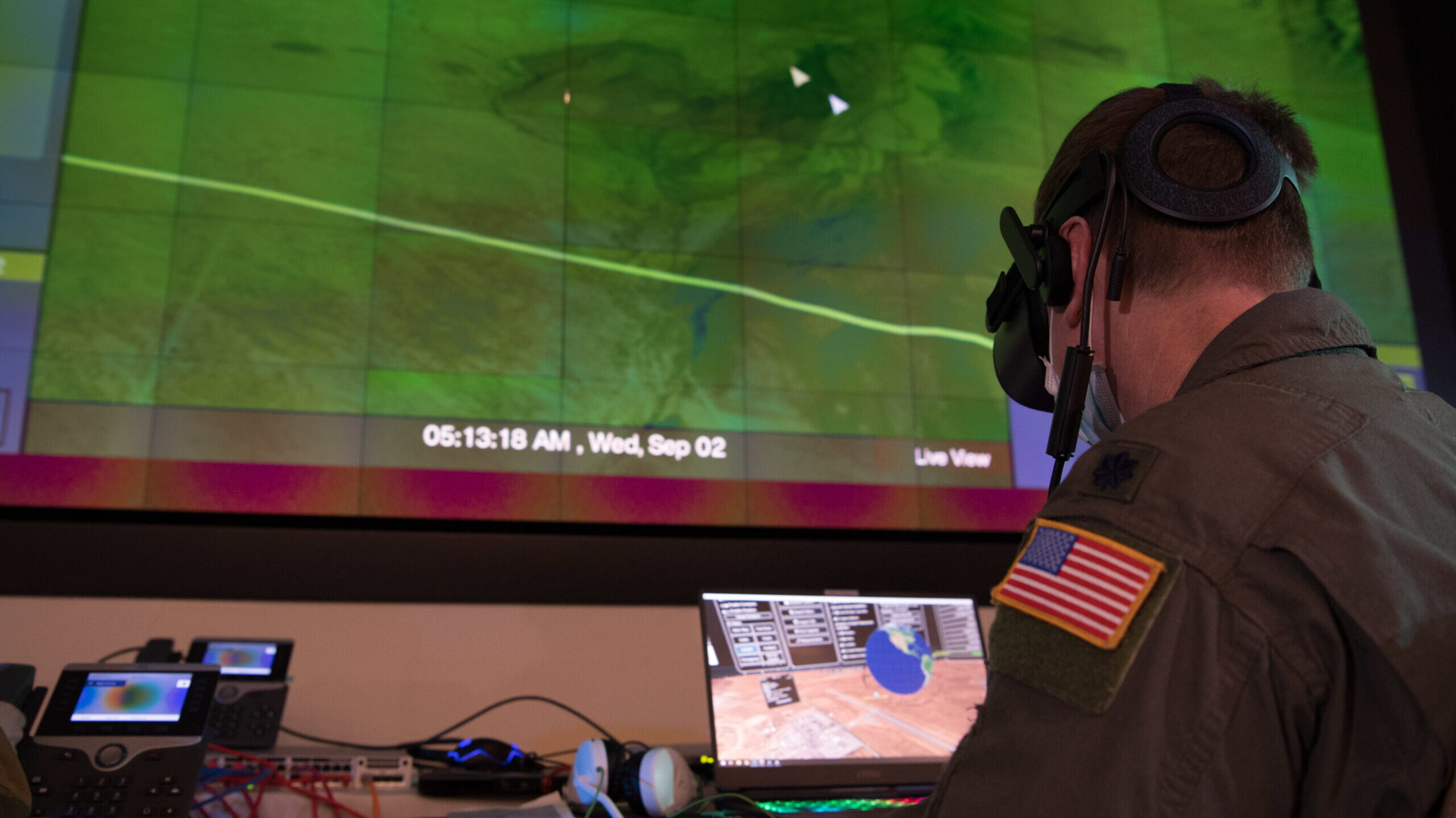JASPREET GILL

U.S. Air Force Lt. Col James Forrest operates a virtual reality headset in support of the Advanced Battle Management System (ABMS) Onramp 2, Sept 2, 2020 at Joint Base Andrews, Maryland. (U.S. Air Force photo by Senior Airman Daniel Hernandez)
WASHINGTON — A key Air Force official said the service is developing an “architecture” to address integrated “kill chains” for its new battle network framework and is addressing operational gaps for the Advanced Battle Management System (ABMS), as the service ramps up its contributions to the Pentagon’s sprawling Joint All Domain Command and Control (JADC2) initiative.
The first analysis of what that architecture would look like was delivered to Air Force Secretary Frank Kendall in June, Brig. Gen. Luke Cropsey, program executive officer for command, control, communications and battle management, said during a keynote speech at the Air Force Life Cycle Industry Days conference in Dayton, Ohio last week.
While Cropsey didn’t elaborate on what that initial analysis looked like, he said the details will be available to “anybody with the right security clearances” in the fall “so you understand the problem the same way that I understand the problem.”
Speaking to reporters after his keynote, Cropsey said the analysis would answer questions like where progress on the Department of the Air Force (DAF) Battle Network needs to be quicker and more resilient, and what programs need to be built to “fill in gaps or holes.”
Cropsey told reporters that a new digital infrastructure, which will accompany the new architecture, will specifically address questions around connectivity.
“What do we need to do for compute and processing?” he asked. “How does the ability to put that capability out further toward the edge and maybe in disadvantaged locations otherwise influence and affect your ability to maintain your command and control through a variety of different operational environments?”
In March, the Air Force revamped its ABMS efforts and unveiled the DAF Battle Network, reflecting a push from Kendall to unify all of the service’s contributions to JADC2.
The framework included dozens of different programs beyond ABMS, which is still continuing to develop the digital infrastructure for the new battle network. In an interview with Breaking Defense at the time, Cropsey said ABMS still formed the “core” of the assignment.
At the conference, Cropsey said he wants to see more frequent updates on how ABMS is making progress.
“I’m pushing my team for quarterly deliverables,” he said. “Something needs to come out the door every quarter. What are we doing this quarter? Who is it getting delivered to? How are we making it better? So I am front-loaded to do 90-day sprints at a scaled kind of perspective.”
They need to address a specific operational need, and if they look “more like typical big bang acquisitions, I’m probably not interested,” Cropsey added.
However the Air Force makes progress on its JADC2 initiatives, there’s an enormous amount of money behind it. According to budget documents, the service requested about $500 million in fiscal 2024 for ABMS, a bit lower than its $556 million request the previous year But that number will increase to $815 million in FY25 and $951 million in FY26.
No comments:
Post a Comment